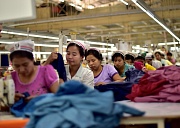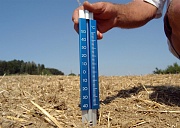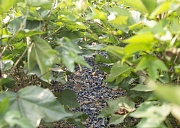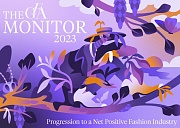What is the 'functional unit' of a winter coat, or a pair of boots? The 'functional unit' is a central concept for lifecyle assessment (LCA) based tools. In the ongoing work on the European Union's (EU) PEFCR (Product Environmental Footprint Category Rules), this is based on the number of days of 'usability'.
Let’s explore what this means. A 'functional unit' is perhaps most easily explained in terms of paint, in terms of how long a certain paint will keep the walls protected and good looking, but how does that translate to apparel?
The EU has decided that the functional unit for a winter coat – or a pair of boots – is 100 days of use. This is the expected usability (functional unit) you can expect to gain from a product before it needs replacing or repairing. So far, so good.
But let’s look at how this works in real life. One dreary winter's day in Oslo, when the snowy city suddenly changed to a cesspool of slush, Tone made the mistake of wearing her wool boots downtown and quickly realised she risked a 'functional unit' meltdown - having to replace her boots after only few days of use.
In the Higg Materials Sustainability Index (Higg MSI), synthetics come out better than natural fibres. Yes, SAC insists that synthetics and natural fibres shouldn’t be compared, but if one looks at the actual numbers, they still do.
In the PEF system that the EU will be launching so that consumers can buy more sustainable products, fibre comparisons will not be readily available. However, it will be possible to compare a product against a given baseline.
This means that a 'more sustainable' winter coat should last longer than the baseline 100 days of use. However, in Los Angeles that might mean a baseline of close to 30 years because you don't often need a winter coat in California.
However, if the same coat ends up in northern Norway, where it could be needed on a daily basis from late September until May, the projected usability of the baseline coat, or pair of boots, could be less than a year.
So, what are clothes supposed to DO for us? They need to protect us from unwanted scrutiny of our bodies, keep us warm, keep us cool, dry, or even alive. The point is that apparel’s function is in constant flux.
This is obvious when the weather changes, sometimes even during the course of a single day. The heavy winter boots needed to commute to work might not cut it in the office, but then the fashionable pair you change into might prove dangerous were you to wear them in the snow and ice outside.
We make judgements about our clothes and footwear when we get dressed every day. We make good choices and bad. We learn and we fail, but it is not an LCA-based labelling scheme that is going to ensure that we have made the right choices for the weather, the energy bill and the changing mores of social acceptability.
Yes, there will be physical issues such as pilling, abrasion, seams that burst and water-repellency that some fibres meet better than others. But converting these into an expected 'functional unit' of days of use will not work because our needs are so varied and complex.
We would therefore like to open up the discussion. Just how, should the EU’s plan for product labelling handle this issue? If LCA-based global averages are the name of the game, the information we are given will be at best so-so, and at worst, completely meaningless.
To make sense, the LCA community needs to figure out what a functional unit is for apparel depending on whose wardrobe it ends up in, and we need research to back this up. It would be much easier and make more sense, if we looked at the actual apparel that ends up in the different waste streams and based any assumptions on those findings.
We have argued that when it comes to clothing and footwear, actual usability - or 'functional unit' - cannot be measured through simple testing of durability or repairability. This can only be done through looking at actual use.
This article was written by Ingun Grimstad Klepp, Professor in Clothing and Sustainability, Consumption Research Norway, at Oslo Metropolitan University, and Tone Skårdal Tobiasson, journalist and author, Board Member Union of Concerned Researchers in Fashion



























































































